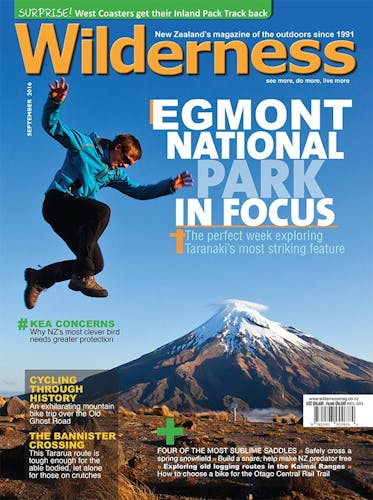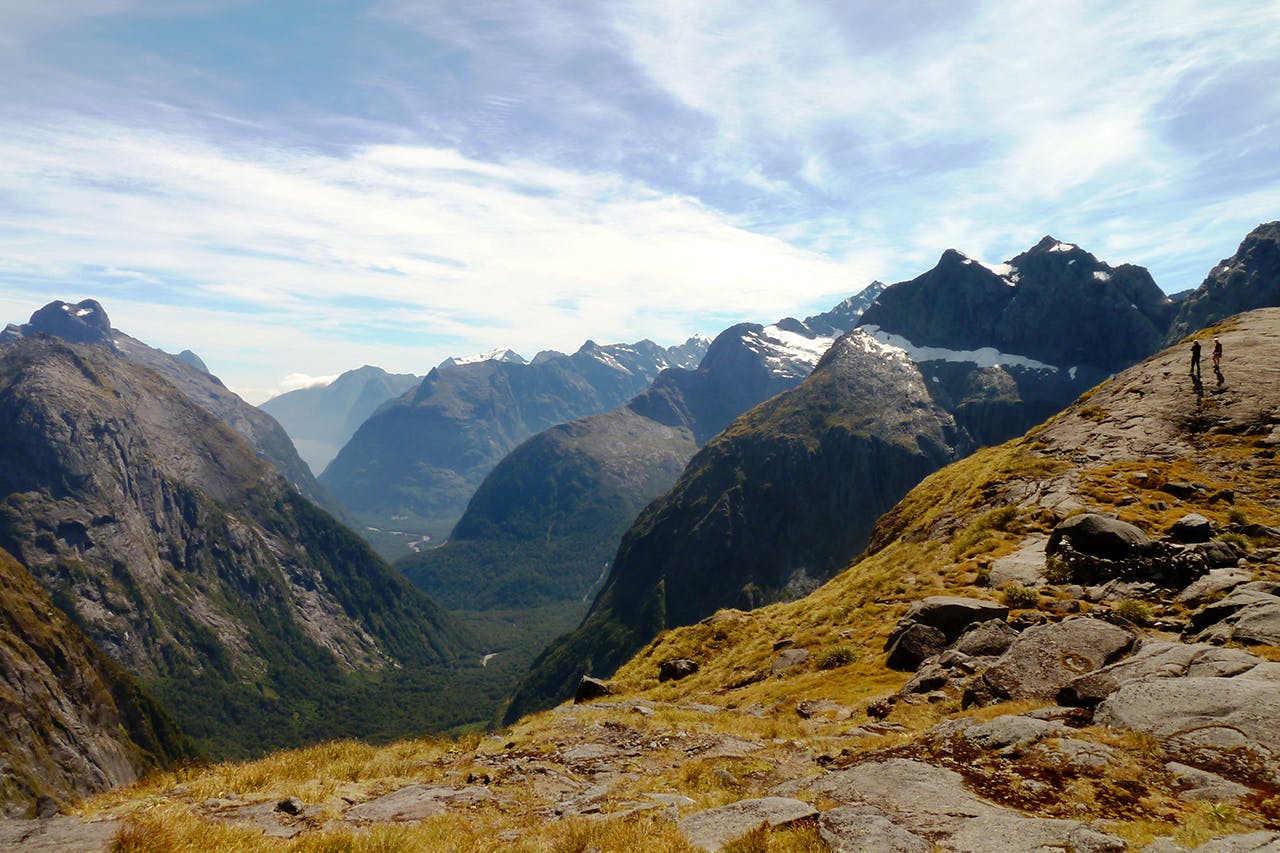Pick the conditions to visit these four saddles – you won’t regret it
Where are you going on your next tramp? Why not head for a sublime saddle, somewhere with expansive views, maybe a tarn or two, and the possibility of a new valley on the morrow?
‘Saddle’ is a good, descriptive name for a low point on a ridge, with the mountains sloping up on either side like pommels. ‘Col’ and ‘pass’ are other names commonly used in New Zealand for a low point on a ridge. Saddle is the most common name of the three, with several hundred in New Zealand. There are approximately 200 different passes but only 121 cols.
Although no real consistency applies to which name gets used, I’ve always thought some sort of crude hierarchy exists: a col is usually alpine in nature, and often requires mountaineering skills; a pass is not so alpine, but steeper to approach or more difficult to cross than a saddle. For example, Trudge Col, as the name implies, is a demanding crossing between the Hawdon and Poulter valleys in Arthur’s Pass National Park. Likewise Fiery Col is higher and more difficult to traverse than Cow Saddle, both of which trampers encounter on the Five Pass trip in Mt Aspiring National Park.
However, that basic rule of thumb has many exceptions. Crossing Clarke Saddle (2978m), between Malaspina and Mt Teichelmann in Aoraki/Mt Cook National Park, is very much an alpine undertaking. Likewise, traversing Full Moon Saddle (2098m) in the remote Adams Wilderness Area also requires trans-alpine skills and equipment. And although lower, Adelaide Saddle (1398m) in the Darran Mountains, with its treacherously steep granite approaches, is not a place to underestimate.
Here are four saddles that, in summer conditions, are all suitable for moderately experienced trampers.
1. Armstrong Saddle (1369m), Ruahine Forest Park
Named after pioneer aviator Hamish Armstrong, who lost his life after surviving a plane crash here in the 1930s, this saddle is normally reached on a track from Sunrise Hut – one of the most popular destinations in the Ruahine Range. On a good day, the tussock-dominated saddle offers fine views northwards toward the volcanoes of Tongariro National Park, and east over the plains and foothills of Hawke’s Bay.
2. Mole Saddle (1269m), Nelson Lakes National Park
Mole Saddle separates the D’Urville and Matakitaki valleys, on the rolling tussocklands of the Tiraumea Range. It’s an appealing destination, made more so by the presence of a nice hut nestled down on the bushline to the west. On a good day, the saddle provides access to the undulating Mole Tops, with their extensive tarn-filled basins.
3. Cascade Saddle (1524m), Mt Aspiring National Park
Cascade Saddle is one of the best-known viewpoints in the Southern Alps, famed because it is simply an outstanding place from which to admire Mts Aspiring, Avalanche and Rob Roy – and all from a curiously undulating tussock shelf, smattered by tarns, and spectacularly edged by horrendous cliffs.
It’s approached either up the steep and potentially lethal track from the West Matukituki Valley, or from an easier track near the head of the Dart Valley. Exposed to the weather, and high enough to receive unseasonable snowfalls, Cascade Saddle is certainly a place to avoid in the wrong conditions. But on a fine summer’s day, it’s simply stunning. Perhaps the best month to visit is December, when the alpine flowers are at their showiest.
4. Gertrude Saddle (1410m), Fiordland National Park
Like Cascade Saddle, Gertrude Saddle can be tricky in bad weather or when snow-covered, but on a good day experienced trampers should encounter no undue difficulties.
It’s reached on an informal cairned route up the Gertrude Valley, with the imposing faces of Mt Talbot, Barrier Knob and Crosscut Peak rising above. Around Black Lake, the route leads to the edge of Gertrude Saddle, which offers a sublime view down the Gulliver Valley to distant Milford Sound and Mitre Peak.







